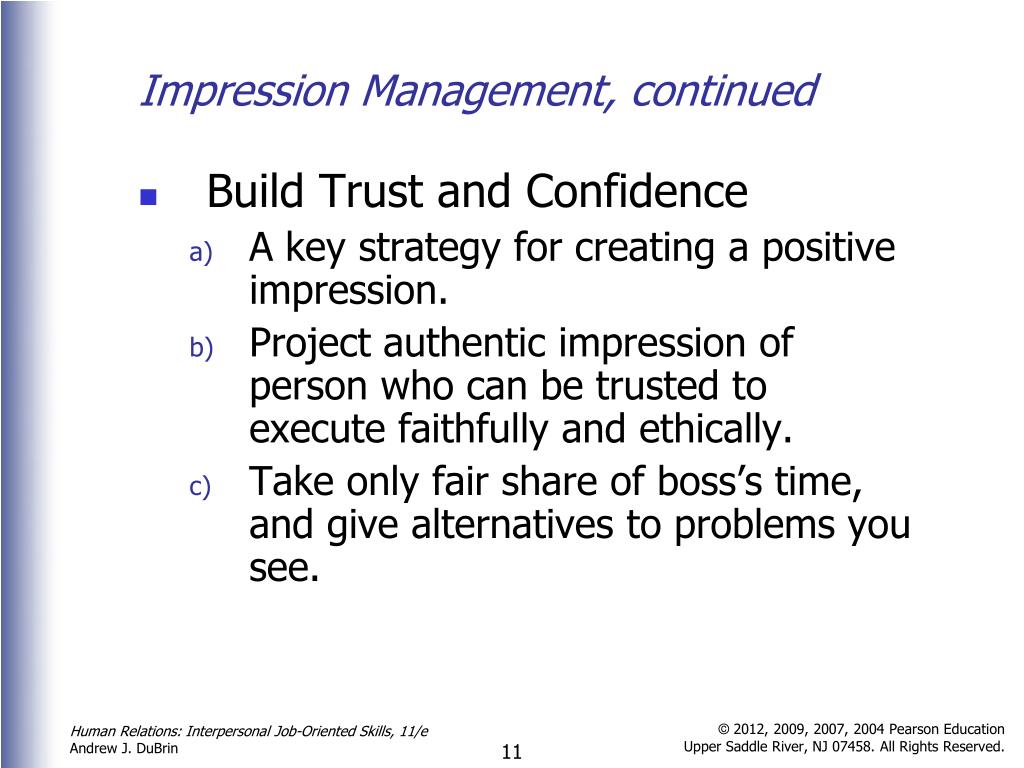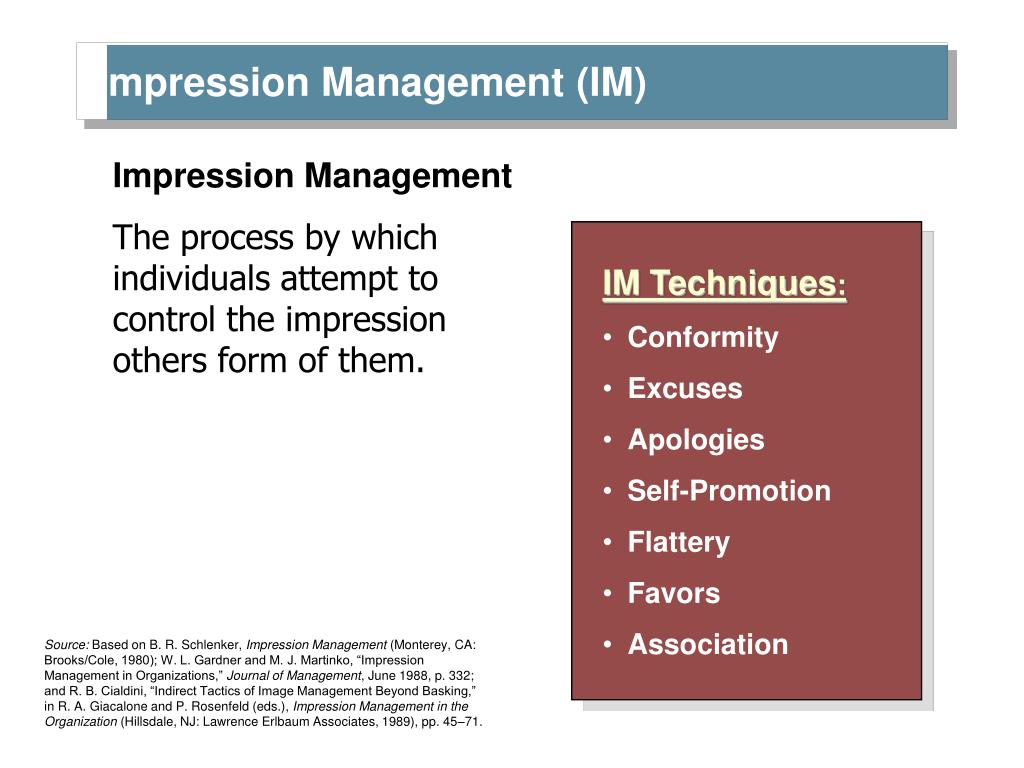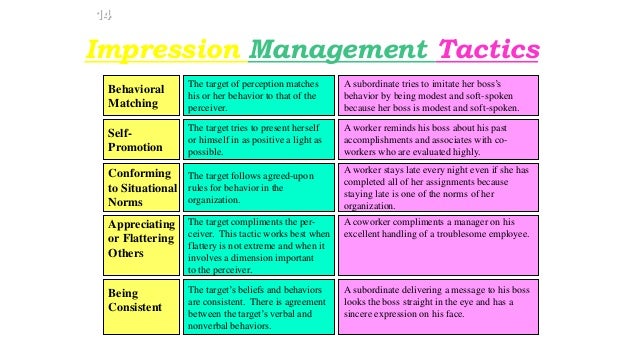
Using impression management individuals professional#
The individual’s professional clothing and imposing stature play a significant role in impression management. We use impression management a lot in business and our personal lives.įor example, someone in a leadership position strives to be respected and tries to control and keep the impression they wear a sharp suit, carry a briefcase, and responsibly conduct themself. Most people who manage impressions try to align other people’s perceptions with their goals. If you are an impression management professional, your goal is to influence your products’ observations and opinions. The impressions that individuals are attempting to communicate are influenced by their roles and norms in the social environment, the values of those whose perceptions are of interest, how they think they currently appear, their self-concepts, and their ideal and undesirable selves. If they feel that their public image is essential and a gap exists between how they want others to see them and how they are seen, they will try harder to control how others perceive them. Impression management is a conscious or subconscious process in which people attempt to influence other people’s perceptions about themselves by regulating and controlling information in social interaction. Impression management (also known as self-presentation) manages how others perceive you. Related: Erving Goffman What is impression management? In short, impression management theory is a valuable tool for understanding human interaction. Impression management theory can better understand a wide range of social phenomena, from why people dress a certain way to behave in different situations. Instead, it is about shaping the impression others have of us to achieve our goals. It is important to note that impression management is not just about deception or creating a false impression. The first line of research focuses on elements that influence the impressions people try to convey, whereas the second line applies self-presentational views to other psychological phenomena. The study of impression management has evolved out of two different lines of research. Impression management is an ongoing process that happens in everyday interactions.

This is done through self-presentation, which is how we present ourselves to others. Its theory posits that individuals attempt to control the impressions others form of them. Erving Goffman first coined the concept in 1959, and from then on, it has been further developed and refined by other sociologists and theorists. Sociologists and theorists have widely studied and applied impression management theory to understand human interaction better. The book was initially released in ‘The Presentation of Self in Everyday Life.’ In 1967, the concept was further developed. In 1959, Erving Goffman proposed the idea of Impression Management. References Who Coined impression management? This blog post will explain impression management, its importance, and strategies to manage it. Impression management can be tricky, but it can help you achieve your goals if done well. When it comes to impression management, it’s essential to know when it may be appropriate.Īlthough impression management is something we all do to some extent, there are certain times when it becomes especially important, such as when we’re trying to impress a new boss or when we’re going on a job interview.

It can be conscious or unconscious, but the intention is always to present oneself favorably through verbal and nonverbal acts like highlighting one’s best qualities and hiding flaws. Impression management is the process of managing how other people see you. Have you ever wondered what the term “impression management” means? It’s often used in many different contexts, but you might not know precisely what it means. For more information, visit our Disclaimer Page.

Disclaimer : We sometimes use affiliate links in our content.


 0 kommentar(er)
0 kommentar(er)
